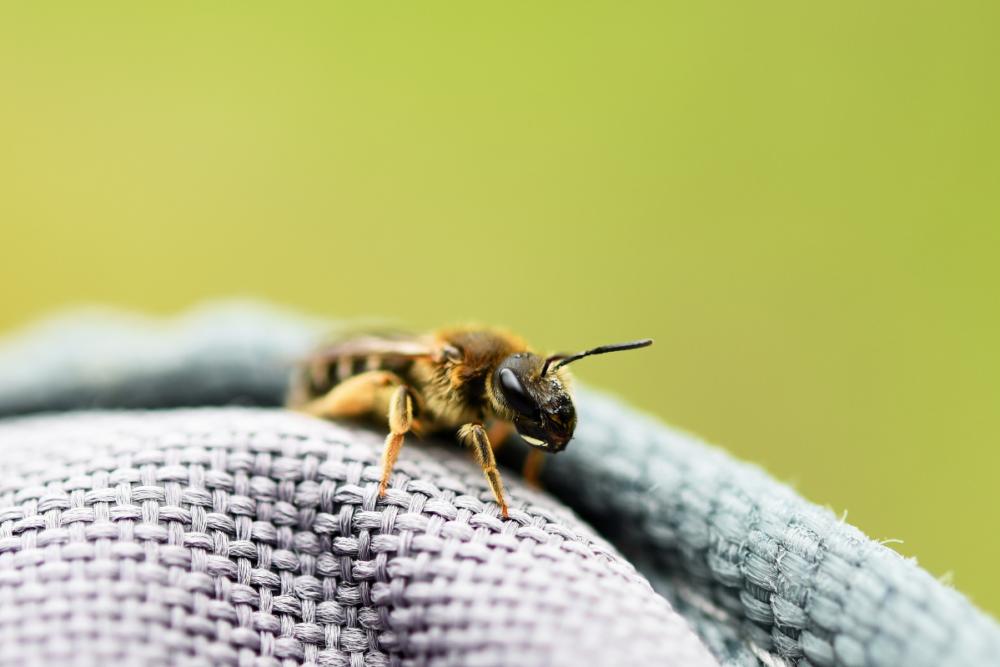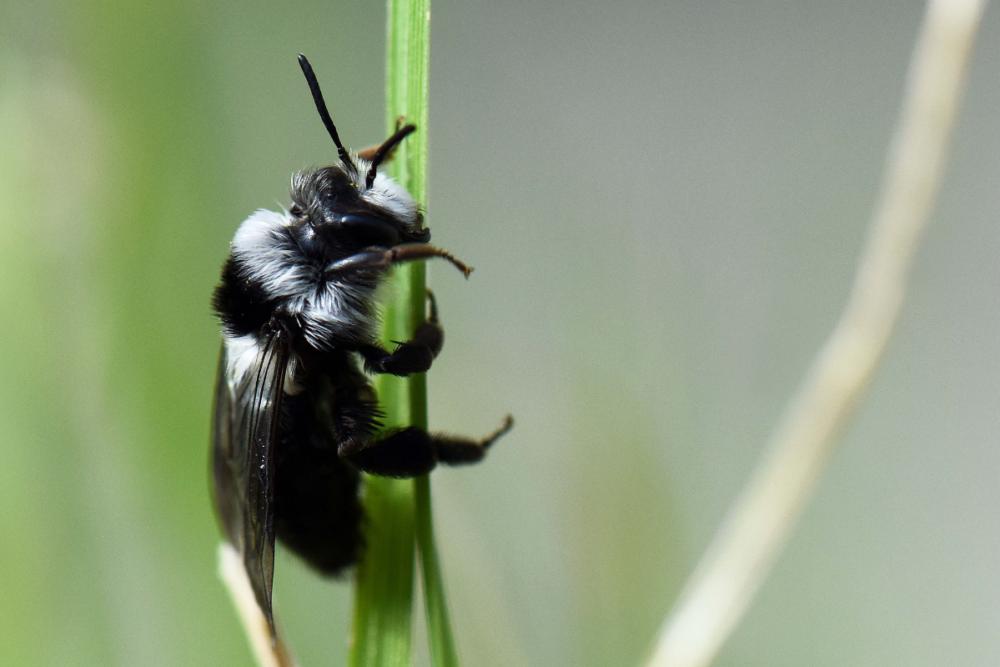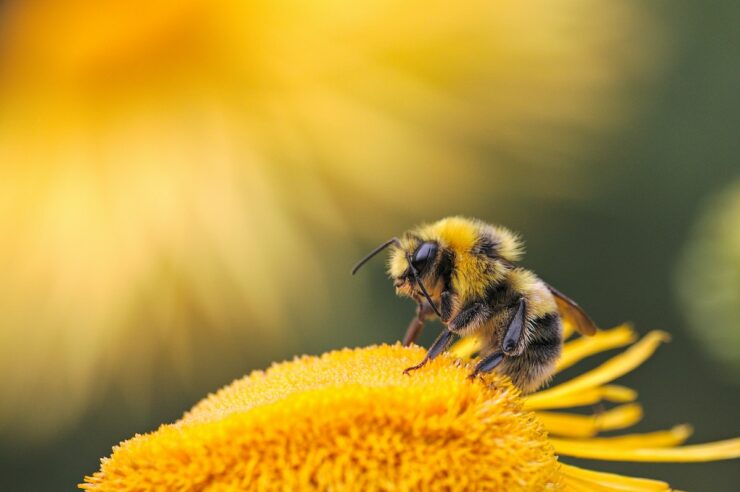
Welcome to the world’s first native bee sanctuary, located in Ireland. Founder Paul Handrick is conflicted about World Bee Day, believing that every day should be dedicated to saving bees. He highlights the problem with focusing solely on honeybees and emphasizes the importance of providing suitable habitat for wild native bees. Handrick and his wife established the sanctuary in 2017, aiming to eventually dedicate the entire land to nature. By spreading awareness and offering advice on social media, Handrick hopes to inspire individuals worldwide to make a difference in their own gardens. Saving bees requires love and action, and the sanctuary is leading the way in preserving these vital pollinators.
The World’s First Native Bee Sanctuary
The Bee Sanctuary of Ireland is the world’s first native bee sanctuary, founded by Paul Handrick. The sanctuary provides a safe and suitable habitat for native bees, which are facing extinction globally. Handrick, also known as The Bee Guy, has conflicted feelings about World Bee Day. He believes that one day is not enough to raise awareness about the plight of bees and that every day should be dedicated to their preservation.
The Issue with Honeybees
Handrick explains that honeybees are a major part of the problem when it comes to the conservation of bees. While honeybees are well-known and often associated with saving the bees, they are just one species out of thousands. Honeybees are more numerous than ever before and compete with wild bees for limited forage. Additionally, when honeybees are moved to new areas, they can spread diseases to native bee populations. Handrick believes that focusing solely on honeybees is a distraction from the larger issue at hand.
Providing Native Bees with Habitat
To truly help native bees, Handrick advocates for providing them with suitable habitat and letting them go about their business in peace. The Bee Sanctuary of Ireland plays a crucial role in this mission by offering plentiful and varied forage for wild native bees. Handrick and his wife, Clare-Louise Donelan, bought the land in County Wicklow in 2011, and in 2017, they decided to turn it into a sanctuary for bees. They were inspired by the negative impacts of multi-crop farming on wildlife and wanted to create a space where bees and other pollinators could thrive.
Fields of sunflowers and phacelia are planted to feed the bees and other pollinators during the spring and summer months. These fields are left unharvested, providing food for birds in the autumn and winter. The ultimate goal is to turn the entire land over to nature, providing a safe haven for native bees and other species.
The Bee Sanctuary of Ireland
The Bee Sanctuary of Ireland is a labor of love for Handrick and Donelan. Their dedication to preserving native bees shines through in their actions and the impact they have had on communities around the world. Through their efforts, they have spread awareness about wild native bees on social media, encouraging people to change their gardens and create bee-friendly spaces.

This image is property of www.positive.news.
Paul Handrick’s Advocacy for Bees
Spreading Awareness on Social Media
Handrick uses social media to spread awareness about the challenges faced by wild native bees. Through his blog and Twitter account as The Bee Guy, he shares information and advice on how individuals can help support native bee populations. Handrick has seen the worldwide impact of his advocacy efforts, with people from Mongolia to Colombia changing their gardens to be more bee-friendly.
Changing Gardens Around the World
Handrick believes that individuals have the power to make a difference by transforming their gardens into bee-friendly spaces. He encourages people to leave as much of their outdoor space wild as possible, providing natural habitats for bees and other pollinators. He also advises against using chemicals and pesticides in gardens, as they can be harmful to bees. Buying plants, seeds, and bulbs that are untreated with pesticides is another way to support bee populations. By making these changes, individuals can create environments that benefit not only bees but a wide range of species.

This image is property of www.positive.news.
Identifying Native Bees
Differentiating Between Species
With over 270 native bee species in the UK alone, identifying them can be a challenge. However, Handrick provides some tips on how to differentiate between species. Some bees can be distinguished by their markings, such as the ashy mining bee with its black and white or grey stripes, or the red-tailed bumblebee with its distinctive red abdomen. The common carder bee is easily identified by its ginger thorax. By familiarizing yourself with these markings, you can begin to recognize different bee species.
Identifying Bees by Markings and Behavior
Behavioral traits can also be used to identify different bee species. For example, the seven species of leafcutter bees can be spotted flying to and fro with pieces of leaf to line their nests. Red mason bees, on the other hand, use mud to build nests in natural cavities. Observing the behavior of bees can provide valuable clues about their species. Handrick encourages people to take the time to observe bees in their garden and appreciate the diversity and beauty of these important pollinators.

This image is property of www.positive.news.
How to Really Save the Bees
Tips for Creating Bee-Friendly Spaces
Handrick offers several tips for creating bee-friendly spaces in your own garden. Leaving as much outdoor space as wild as possible is essential, as it provides natural habitats for bees to nest and forage. Avoiding the use of chemicals and pesticides is crucial, as these substances can harm bees and other pollinators. Instead, opt for untreated plants, seeds, and bulbs to support bee populations. Handrick also suggests reaching out to local authorities and businesses, encouraging them to manage their green spaces in bee-friendly ways.
Avoiding Chemicals and Pesticides
Chemicals and pesticides used in agriculture pose a significant threat to bees. To protect bees and other pollinators, Handrick urges individuals to eat organic whenever possible. Agricultural pesticides can be fatal to bees, so choosing organic options supports a healthy and thriving bee population. By making conscious choices about our food consumption, we can contribute to saving the bees.
Promoting Organic Eating
Handrick believes that promoting organic eating is critical to bee conservation. By consuming organic produce and supporting organic farming practices, individuals can help reduce the use of harmful pesticides and create a more sustainable food system. Organic agriculture is beneficial for not only bees but also the environment and human health.
Encouraging Bee-Friendly Practices in the Community
Handrick emphasizes the importance of spreading awareness and encouraging bee-friendly practices in our communities. By sharing information about the challenges faced by bees and the actions individuals can take to help, we can inspire others to make a difference. Advocating for bee-friendly practices in local businesses and local authorities can also have a significant impact on the well-being of bee populations. By working together, we can create a more bee-friendly world.
In conclusion, the Bee Sanctuary of Ireland and Paul Handrick’s advocacy for bees highlight the importance of providing suitable habitat and supporting wild native bee populations. By spreading awareness, changing our gardens, and promoting bee-friendly practices, we can all play a role in saving the bees. Every day should be World Bee Day, as bees and other pollinators are essential for a healthy and thriving ecosystem. Let us embrace our role as stewards of the Earth and work towards a bee-friendly future.

This image is property of www.positive.news.